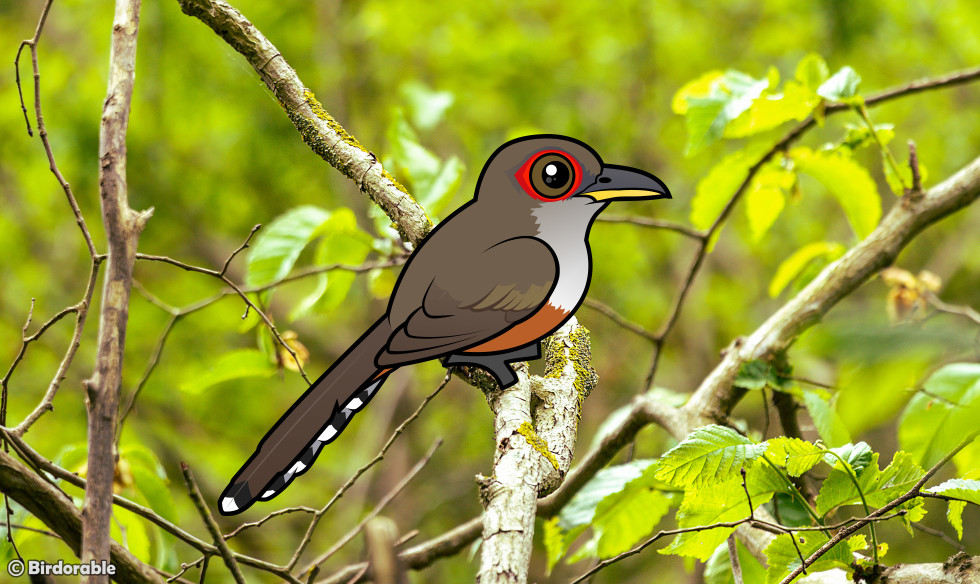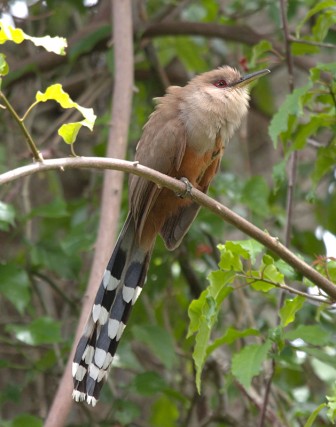Puerto Rico Week
New Birdorable: Meet the Puerto Rican Lizard-Cuckoo

Puerto Rico Week continues with the introduction of another amazing new Birdorable—say hello to the Birdorable Puerto Rican Lizard-Cuckoo!
This fascinating bird is another one of Puerto Rico’s 18 endemic bird species. The Puerto Rican Lizard-Cuckoo stands out not only for its unique look but also for its behavior and diet. As the name suggests, this bird is a specialist in catching lizards, which make up a significant part of its diet. It also feeds on a variety of large and small insects, including walking sticks, caterpillars, and centipedes. They have also been known to feed on coqui frogs. Lizard-Cuckoos use stealth and patience to ambush prey.
The Puerto Rican Lizard-Cuckoo has a long, graduated tail with bold white tips, a long, slightly curved rectangular bill, and a reddish ring around the eye that gives it a somewhat intense expression. Its plumage is mostly warm brown above and pale below, with soft rufous coloring on the wings. When it moves through the forest, it does so quietly and slowly, often hopping along branches or creeping through vines—its movement is almost squirrel-like.
Although it is not considered rare, the Puerto Rican Lizard-Cuckoo is often hard to spot due to its secretive nature. It prefers dense vegetation and forests, where it can sneak through the canopy and stay hidden. Birders often detect it by its call—a loud, laughing series of notes that rise and fall in pitch. This vocalization is often the first clue that a Lizard-Cuckoo is nearby, even if you can’t see it.

Puerto Rican Lizard-Cuckoo by Cataloging Nature [CC BY 2.0]
This species is found in a range of habitats across Puerto Rico, from dry coastal forests to wet montane forests, and even in suburban areas with mature trees and vegetation. The Puerto Rican Lizard-Cuckoo is one of several island endemic Lizard-Cuckoo species, along with birds native to and named after Jamaica and Hispaniola.
Despite its widespread range on the island, the Puerto Rican Lizard-Cuckoo faces some of the same threats as other native birds. Habitat loss and fragmentation can reduce nesting opportunities and food sources. Invasive predators like feral cats and rats may also impact populations. Still, the species is currently considered stable, and its adaptability to different habitats has helped it persist.
We’re thrilled to add this unique bird to our Birdorable lineup! The Birdorable Puerto Rican Lizard-Cuckoo captures the bird’s distinctive look in our signature cute style. Whether you’re a fan of island birding, cuckoos, or just love learning about unique wildlife, we hope you’ll enjoy this newly illustrated species.
Check out our shop for products featuring the Puerto Rican Lizard-Cuckoo, from t-shirts to stickers and more. And stay tuned as we continue Puerto Rico Week, highlighting the island’s incredible endemic birds and the places you can go to see them!




Comments
Be the first to comment
Thank you!